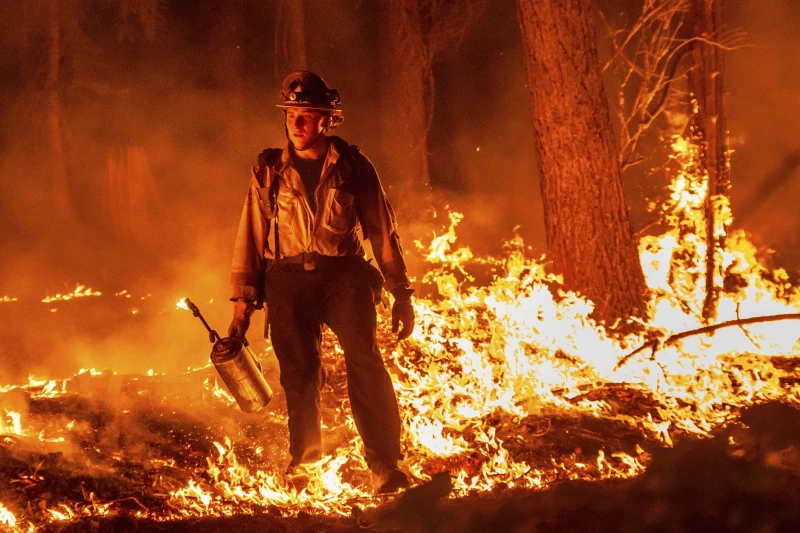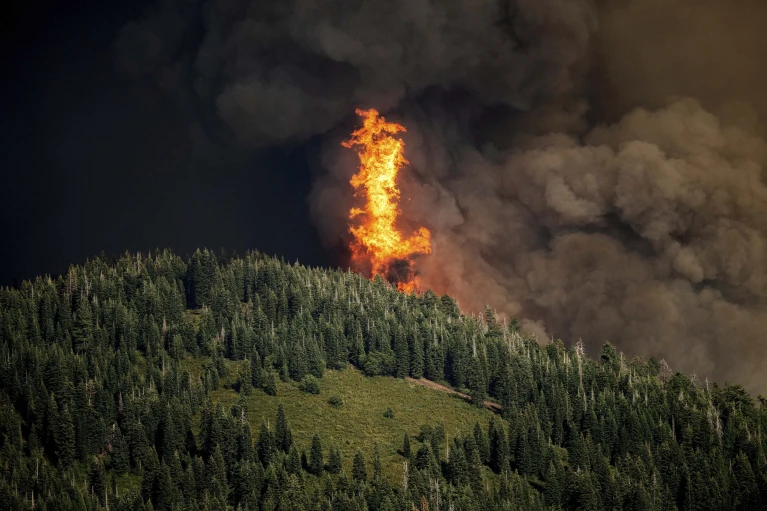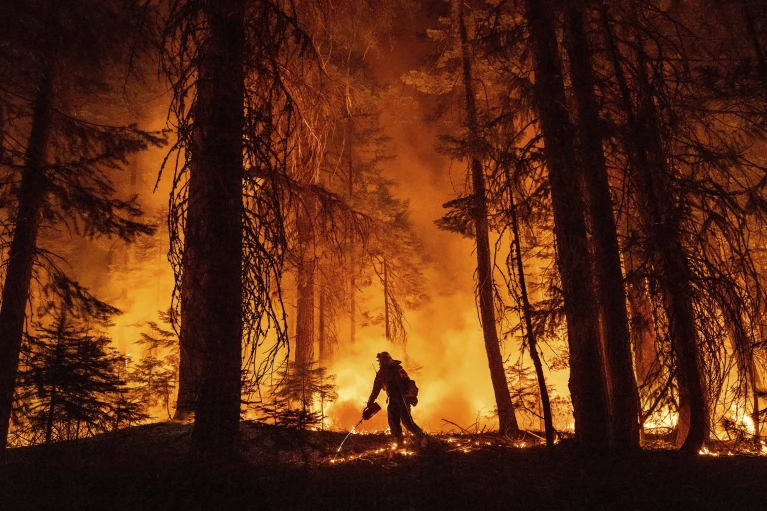The Park Fire, which has recently become California’s largest wildfire of the year, has underscored the continuing threat posed by wildfires in the state, particularly in regions that are prone to hot and dry weather.
Since its eruption on July 24 near the city of Chico, this conflagration has consumed an astounding 660 square miles (1,709 square kilometers) of timber and wildland.
As reported by Cal Fire, containment efforts are currently at 34%, a statistic that highlights both the scale of the devastation and the immense challenges faced by firefighters.
The Park Fire’s rapid escalation to become California’s fourth-largest wildfire on record serves as a grim reminder of the increasing frequency and intensity of such disasters.
Initially, the fire’s explosive growth was attributed to a combination of factors, including high temperatures, low humidity levels, and dense vegetation that provided ample fuel for the flames.
Fortunately, a temporary shift in weather conditions toward the end of last week provided some respite, reducing the fire’s intensity. However, it was short-lived.
As the weather once again turned unfavorable this week, the fire reawakened, roaring back to life and becoming a focal point of firefighting efforts.
A significant segment of the scorched area has entered the mop-up stage, where crews work to extinguish remaining hot spots and prevent the potential spread of fire.
However, the persistence of spot fires remains a cause for concern, complicating the operations that are essential for achieving full containment.
According to operations deputy Jed Gaines, the northeast corner of the fire is currently the top priority for firefighting resources.
His statement, “It’s not time to celebrate,” is a sobering reminder that while some progress has been made, the battle is far from over. For the crews on the ground, the arduous task continues, as they face several more critical days of work to safeguard both lives and property.
The impact of the Park Fire extends beyond the immediate destruction of natural resources; it has also wrought havoc on local communities.
To date, official assessments indicate that 636 structures have been completely destroyed, with an additional 49 reported as damaged.
These statistics do not merely reflect numbers; they signify the loss of homes, livelihoods, and a sense of safety for countless individuals and families.
Such devastating outcomes are compounded by the psychological distress experienced by residents who are forced to evacuate and grapple with uncertainty regarding the future.
Compounding the tragedy, authorities recently arrested a local man for allegedly igniting the fire by pushing a burning car into a gully in a wilderness park outside Chico.
This incident serves as a stark illustration of how human actions can precipitate large-scale environmental disasters. It raises questions about responsibility, prevention, and the broader implications of reckless behavior in vulnerable ecosystems.

As California grapples with these challenges, it is imperative to implement more robust measures aimed at preventing such incidents and mitigating their consequences.
The Park Fire also fittingly highlights a larger narrative concerning wildfires in California and, indeed, across the Western United States.
As climate change continues to alter weather patterns, the likelihood of extreme heat and prolonged drought periods increases.
Such changes pose an existential threat not only to natural landscapes but also to the communities that reside within or near these environments.
It is therefore crucial for policymakers, scientists, and community leaders to engage in collaborative efforts aimed at enhancing wildfire preparedness and response strategies.
Approximately 100 miles (160 kilometers) to the south, within the jurisdiction of El Dorado County, a new forest fire has emerged, displaying markedly extreme behavior that underscores the increasingly erratic nature of wildfire occurrences in the region; as a direct consequence of this perilous situation, certain aircraft initially designated for the Park Fire response have been redirected to assist in combatting this new threat.

The incident, identified as the Crozier Fire, is situated roughly 10 miles (16 kilometers) to the north of Placerville and, as reported on Thursday evening, has thus far consumed more than 2 square miles (5.17 square kilometers) of timber and chaparral—an alarming trajectory considering that containment efforts have only achieved a modest success rate of 5%.
Cal Fire has indicated that this rapidly advancing fire poses a significant threat to the structural integrity and safety of approximately 1,625 individual structures, thereby necessitating urgent and coordinated firefighting efforts to mitigate the potential for widespread devastation and to safeguard both human habitation and the surrounding ecosystem.
In conclusion, the Park Fire serves as a poignant reminder of the intersection between human activity, environmental factors, and the growing crisis of wildfires in California.
As firefighters continue their efforts to contain the blaze and mitigate its impact, it becomes increasingly evident that proactive measures must be taken to address the root causes of such disasters.
While the current situation appears daunting, it also poses an opportunity for reflection and action as we collectively navigate the perilous landscape of climate change and its implications for wildfire management in the days, months, and years to come.
The resilience of communities, the dedication of first responders, and the implementation of effective policies will be instrumental in shaping a future that minimizes the risks posed by such devastating events.
